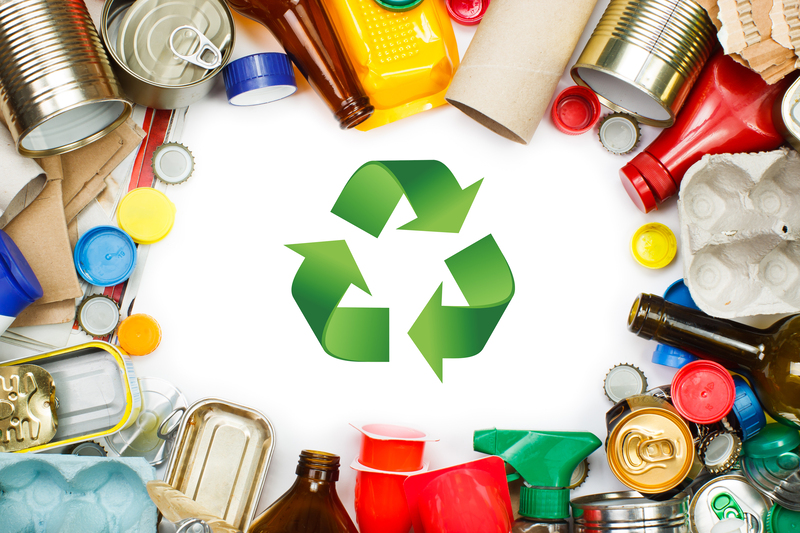Trends Shaping Waste Disposal's Future
Posted on 09/06/2025
Waste disposal is a critical component of modern society, ensuring that waste materials are managed in a way that minimizes their impact on the environment. As we move towards a more sustainable future, several trends are emerging that are set to reshape the landscape of waste disposal. These trends are driven by advancements in technology, changing regulatory frameworks, and evolving societal attitudes towards waste and sustainability.
1. Embracing Circular Economy Principles
The concept of a circular economy is gaining traction as a sustainable alternative to the traditional linear economy. In a circular economy, waste is minimized, and resources are continually reused and recycled. This approach emphasizes the need for designing products that can be easily disassembled and repurposed, thus reducing the overall amount of waste generated.

2. Advanced Waste Sorting and Recycling Technologies
The advancement of technology is revolutionizing the waste disposal industry. Automated waste sorting systems, powered by artificial intelligence and machine learning, are becoming more prevalent. These systems can efficiently separate various types of waste, increasing the rate of recycling and reducing contamination. Additionally, advancements in chemical recycling are enabling the conversion of plastics and other materials back into their raw forms, further supporting the circular economy.
3. Waste-to-Energy Conversion
Waste-to-energy (WtE) technologies are gaining momentum as a viable solution for managing waste. These technologies convert non-recyclable waste materials into energy, typically in the form of electricity, heat, or fuel. By harnessing the energy content of waste, WtE not only reduces the volume of waste sent to landfills but also provides a renewable source of energy.
4. Policy and Regulatory Changes
Governments around the world are implementing stricter regulations to manage waste disposal more effectively. Policies such as extended producer responsibility (EPR) require manufacturers to take responsibility for the entire lifecycle of their products, including disposal. This incentivizes companies to design products that are easier to recycle and encourages more sustainable production practices.
5. Public Awareness and Participation
Increased public awareness about the environmental impact of waste is driving more responsible consumer behavior. Communities are becoming more engaged in waste reduction initiatives, such as composting and recycling programs. Education campaigns and incentives for waste reduction are encouraging individuals and businesses to adopt more sustainable practices.
6. Smart Waste Management Systems
The integration of smart technologies into waste management is transforming how waste is collected, transported, and processed. Internet of Things (IoT) devices can monitor the fill levels of waste bins, optimize collection routes, and reduce operational costs. Data analytics can provide valuable insights into waste generation patterns, helping municipalities and businesses make informed decisions.
Pros and Cons of Evolving Waste Disposal Trends
Pros
- Improved resource efficiency and reduced waste generation.
- Reduction in landfill usage and associated environmental impacts.
- Generation of renewable energy from waste materials.
- Enhanced public awareness and participation in sustainability efforts.
- Stricter regulations leading to more sustainable production practices.
Cons
- High initial investment costs for advanced technologies.
- Challenges in adapting existing infrastructure to new systems.
- Dependency on technological advancements and their reliability.
- Potential for unintended environmental impacts from waste-to-energy processes.
Tips for Adapting to Future Trends
- Stay informed about the latest advancements in waste disposal technologies.
- Engage in local waste reduction and recycling programs.
- Support policies and initiatives that promote sustainable waste management.
- Adopt practices that minimize waste generation in your daily life.
- Encourage businesses to adopt circular economy principles.

Key Takeaways
- The circular economy is reshaping how we view waste disposal.
- Technological advancements are enhancing waste sorting and recycling.
- Waste-to-energy is emerging as a practical solution for non-recyclable materials.
- Policy changes are driving more sustainable production and disposal practices.
- Public participation is crucial for the success of waste reduction initiatives.
Conclusion
The future of waste disposal is poised for significant transformation, driven by a combination of technology, policy changes, and public engagement. As societies move towards more sustainable practices, embracing these trends will be crucial for minimizing the environmental impacts of waste. By adopting circular economy principles, leveraging advanced technologies, and fostering public participation, we can create a more sustainable future for waste management.





